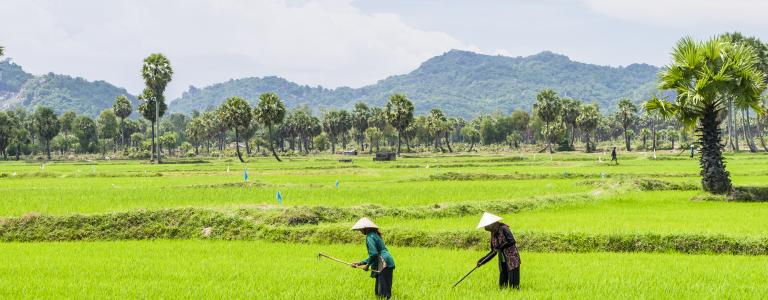The ASEAN Guidelines on Promoting Responsible Investment in Food, Agriculture and Forestry (ASEAN RAI)
IISD supports the implementation of the ASEAN RAI to promote more responsible investment in the region’s agriculture and food systems.
The guidelines are designed to help ensure that “investments in agriculture meet global standards and promote responsible and sustainable development.” They are also geared toward driving greater inflows of foreign direct investment into the region while accounting for the varying situations and responsibilities of smallholder farmers, small- and medium-sized enterprises, and large-scale agriculture and forestry enterprises.
The voluntary guidelines are grounded in the Committee on World Food Security's Principles for Responsible Agriculture and Food Systems (CFS-RAI) but have been adapted to reflect the specificities and characteristics of ASEAN member states.
The primary purpose of the guidelines is the promotion of “investment in food, agriculture and forestry in the ASEAN region that contributes to regional economic development, food and nutrition security, food safety and equitable benefits, as well as the sustainable use of natural resources.” They also name a series of related objectives looking at national and regional dynamics, policy approaches and frameworks.
These guidelines were prepared for the ASEAN Secretariat in 2018 by IISD and Grow Asia, with the financial support of the Swiss Agency for Development and Cooperation and the World Bank. After a lengthy period of regional and international consultation, they were adopted by the ASEAN Ministers of Agriculture and Forestry in October 2018. They can be viewed in their entirety on the ASEAN Secretariat Website and summary version can be found at the Grow Asia Website.
Background: The ASEAN context
The ASEAN member states are Brunei, Cambodia, Indonesia, Lao PDR, Malaysia, Myanmar, Philippines, Singapore, Thailand, and Vietnam. Dating back to 1967, the regional grouping includes countries at varying levels of economic development, with significant gaps between older members of ASEAN and newer entrants into the coalition. ASEAN member states are currently pursuing a regional integration agenda aimed at making the region more economically competitive, known as the ASEAN Economic Community Blueprint 2025, and which includes food, agriculture, and forestry as “priority integration sectors.”
The region’s countries are important agricultural exporters and have abundant agricultural resources to draw from for both subsistence and export purposes, even as they grapple with persistent problems of severe food insecurity and undernourishment: according to the Food and Agriculture Organization of the United Nations, 82.2 million people in Southeast and East Asia were experiencing severe food insecurity in 2017, an increase from 75.1 million the year prior and 48.9 million in 2015.
ASEAN member states are also among those economies that are expected to feel some of the earlier effects of climate change due to their geographic characteristics, which could have worrisome implications for the region’s medium- and long-term food security. In a 2014 assessment report, the Intergovernmental Panel on Climate Change warned that countries in Asia could see agricultural productivity worsen as a result of climate change, while qualifying that the impact could vary by country and crop.
The guidelines are part of a broad range of ASEAN initiatives aimed promoting responsible and sustainable investment in food, agriculture and forestry to help achieve food and nutrition security and create economic growth and opportunities, while responding to the global challenge of climate change.
Latest
You might also be interested in
Model Agreement for Responsible Contract Farming
A simple and practical legal tool for buyers and producers to improve their business relations and to help make responsible agricultural investment a reality.
Touring Agricultural Investment Projects
A two-week trip explores how to maximize the benefits and minimize the risks of agricultural investment tools in Africa.
ASEAN Guidelines and Action Plan on Responsible Investment in Food, Agriculture and Forestry: Workshop on Operationalizing the Action Plan
This report captures the main elements of a workshop held in July 2019 in Bangkok, Thailand, devoted to the lessons learned and next steps for the ASEAN Guidelines on Promoting Responsible Investment in Food, Agriculture and Forestry, as well as the associated Action Plan.
ASEAN Guidelines for Responsible Investment in Food, Agriculture and Forestry
These guidelines, adopted by ASEAN Ministers on Agriculture and Forestry, focus on promoting responsible investment in the region's food, agriculture and forestry sectors.





